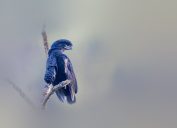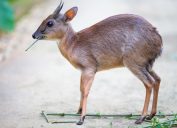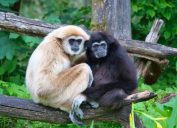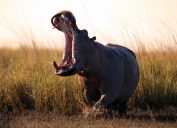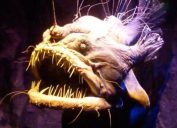30 Toughest Animals You'd Never Want to Meet in a Dark Alley
Ferocious beasts (and where to find them)
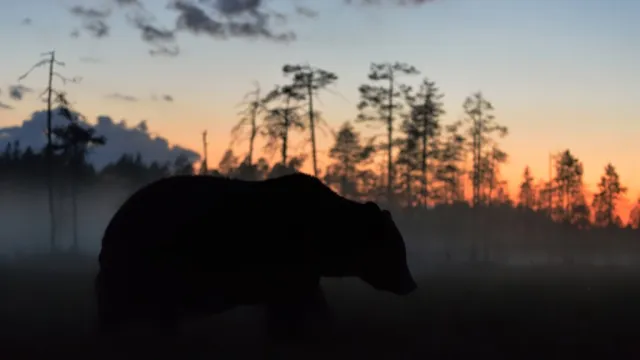
Fact: You don't want to tango with Mother Nature. The world at large is full of ferocious creatures that, if crossed, can dish out some serious damage at the blink of an eye. And sure, humans have developed high-tech weaponry and reinforced protective gear. We've refined martial arts and hand-to-hand combat to unimaginably lethal levels. But even if you're equipped with all that and more, if you know what's good for you, you'd still best steer clear of the world's toughest animals. Or better yet, make like a (much) weaker creature: Turn tail and run!
1
Honey Badger

These goofy weasel-like creature—best known for being the subject of a viral video—truly, as said video vulgarly suggests, don't care. They're notorious for their fearlessness, and go after animals either far larger or far more venomous (such as the cobra), then use their power jaws and sharp teeth to bring down prey, eating every last bit once they do. For example: here are honey badgers taking on six lions. They don't always win, but they also don't ever care—and as such will fight to the death.
2
Wolverine
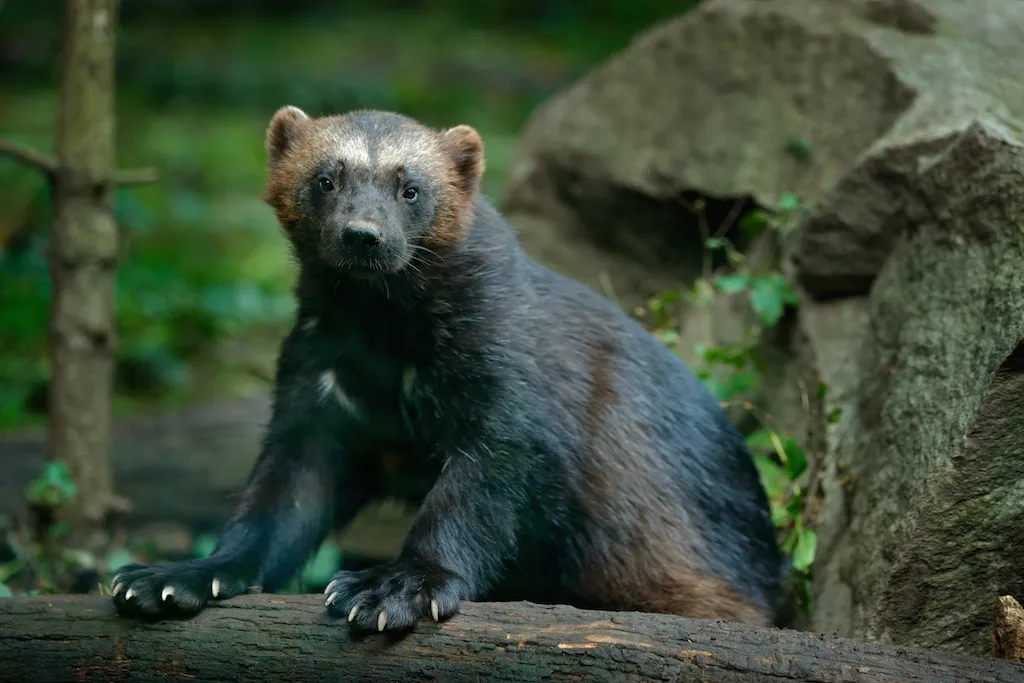
There's a reason Marvel based one of its toughest superheroes on this animal. It might not look like much, at just 20 to 50 pounds, but they unquestionably punch above their weight, going not only after squirrels and beavers but bison, moose, and full-grown deer, killing animals many times their size.
3
Deathstalker scorpion

Considered the "world's most lethal scorpion," the deathstalker more than earns its name. Not only is its poison dangerous for adults and deadly for children and older people, but it moves startlingly fast, too—at about 130 centimeters per second. Watch out for these small but stealthy creatures when in Northern and East Africa (and, if somehow you do run into them in the United States, be warned: the anti-venom to combat their poison has yet to be approved by the FDA here).
4
Grey Wolf
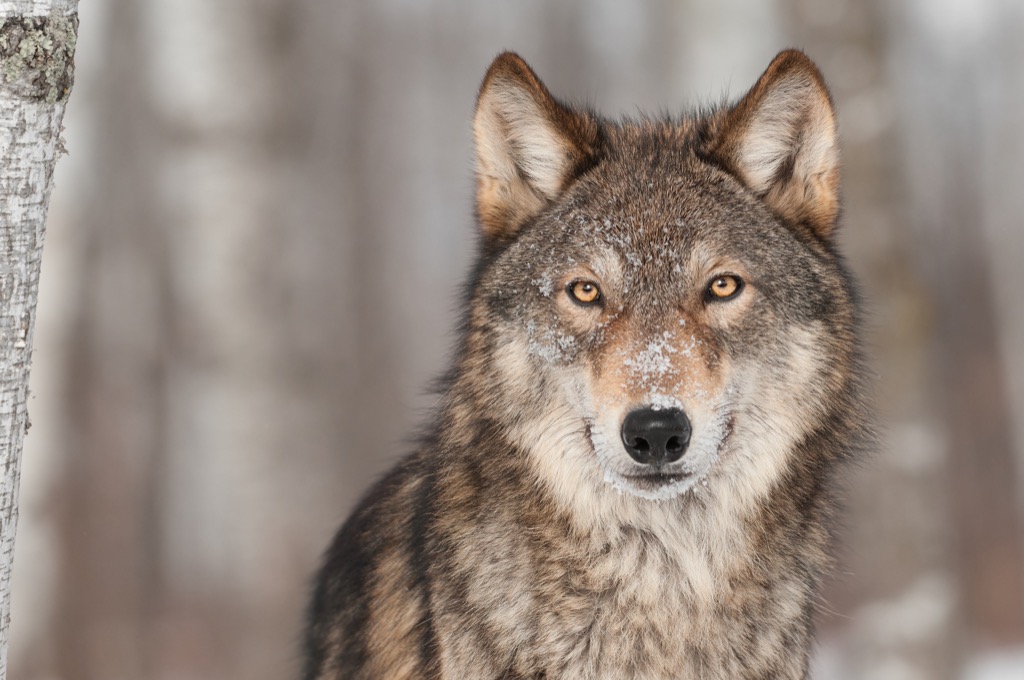
Perhaps the only creature tough enough to match Liam Neeson on a bad day, the grey wolf is tough on its own and all-but inescapable when encountered in a pack. It can handle temperatures at -40 degrees and can move at almost 40 mph. Its bite can be as strong as 1,500 pounds per square inch. And you can bet that, if you encounter a whole pack, you won't be getting bit just once.
5
Black Mamba

Not only is this reptile lethally venomous, it can also grow up to 14 feet long, making it Africa's longest venomous snake—and a fast-moving one at that (it can move at speeds of 12.5 miles an hour). Their name refers not to their skin color (which tends to be gray) but the inside of their mouths, which is more of a blue-black color. If you see the inside of their mouths, it may be too late: these animals inject a huge amount of nuero- and cardiotoxin each time they strike, causing death within 20 minutes.
6
Heck Cows

You're probably thinking, "Cows?" But these aren't just any cows—they're a particular species bio-engineered by German zoologists Heinz and Lutz Heck who were aiming to recreate a extinct wild ox breed (known as aurochs) that were a staple of the region's mythology. They managed to create an aggressive and uniquely shaped species that came to be known as the Heck cow, and became a feature of Nazi pride and propaganda. These cows still roam freely around Bavaria and could cause some serious pain to someone foolish enough to annoy them.
7
Spotted Hyenas
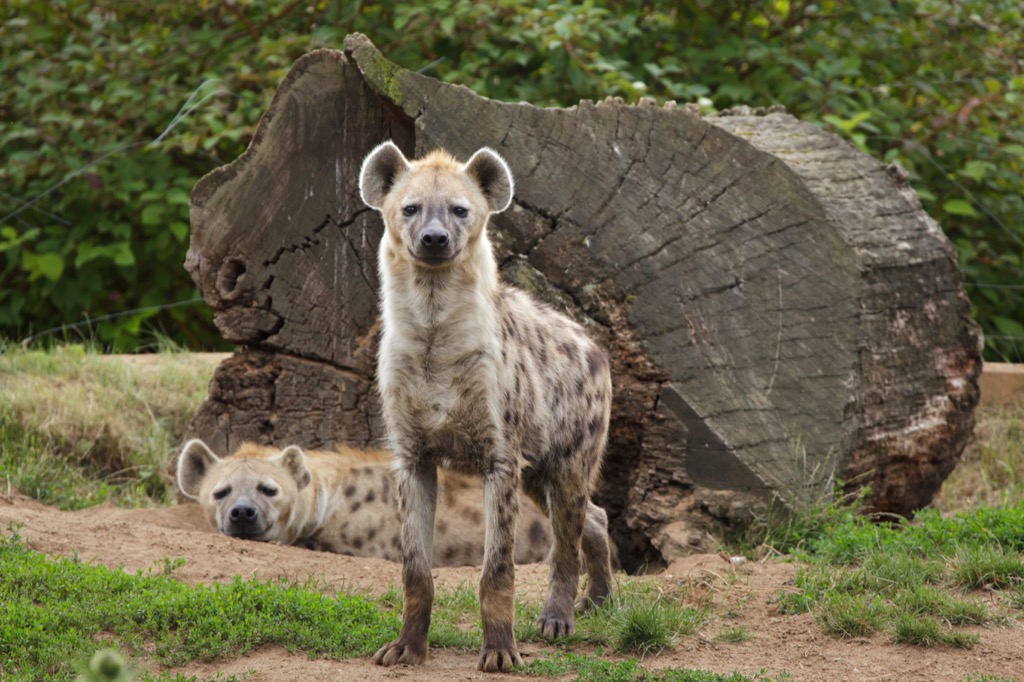
These carnivores are likely to have the last laugh in an unexpected encounter with a person. They have a bite with a force of 1,000 pounds per square inch and, when they attack, they go for the face, neck, and spine, inflicting damage to soft tissue and internal organs as they go. Though they generally stay away from humans, they do occasionally make their way into urban areas and cause plenty of problems for those who encounter them.
8
Slow Loris
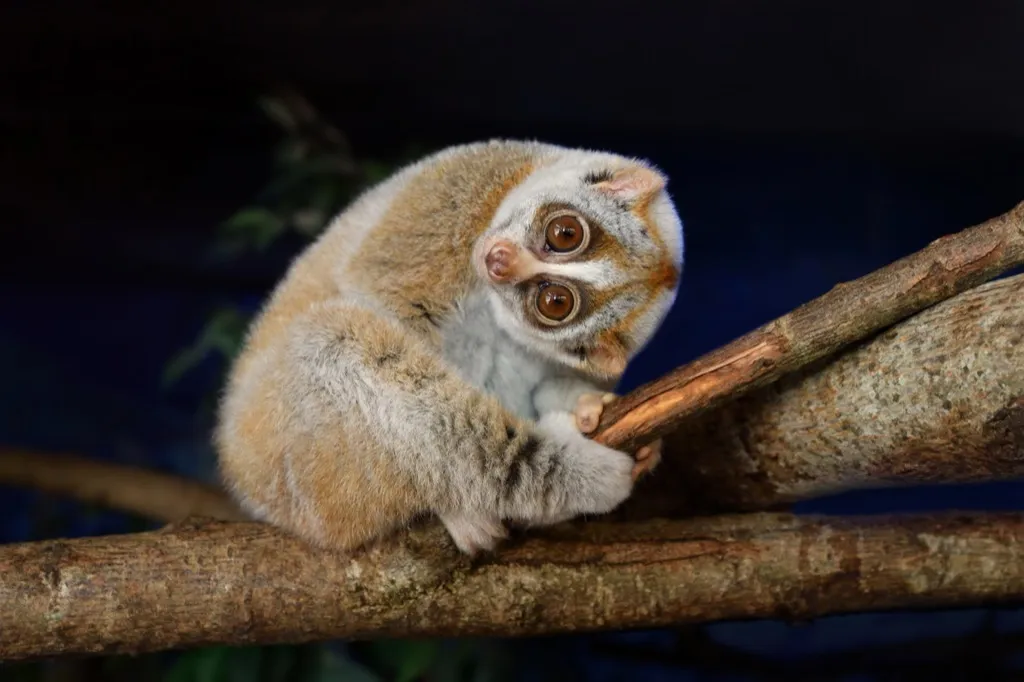
This nocturnal primate has big eyes and long limbs that make it an adorable inspiration for a stuffed animal. But watch out when it drops an elbow: These animals have toxin-producing glands in their upper arms, which they then lick, filling their mouth with poison, before biting their prey. Only small animals have actually died from the bites, but at least one researcher has been sent to the hospital after a loris attack.
9
Wild Boar
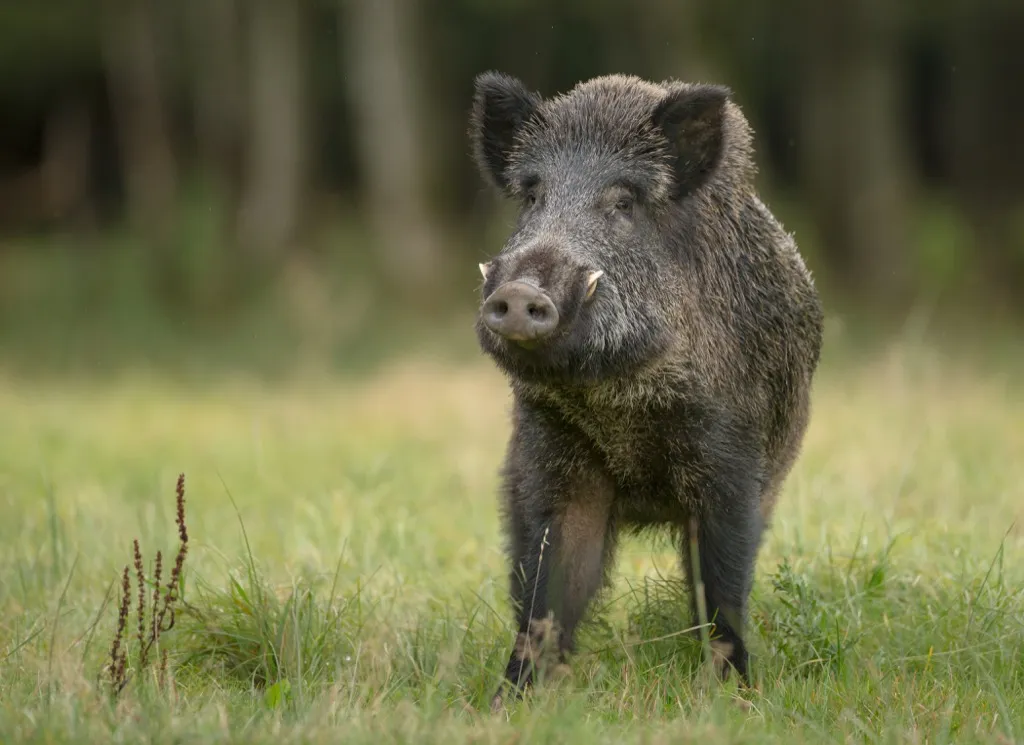
These aggressive, portly-but-fast-moving animals are fierce and come equipped with razor-sharp tusks, but what's perhaps most dangerous about them is the environmental destruction they cause. "I've never seen any one species that can affect so many livelihoods and resources," Michael Bodenchuk, the state director of Texas Wildlife Services, told Scientific American. The USDA is spending $20 million to try and slow the spread of these animals, who have spread to 39 states and are only proliferating further.
10
Giant Anteater

Sure, they generally stick with eating ants, as their name implies. But those giant claws can do more than disturb insect nests. Researchers have found several cases in which the furry animal attacked humans, in one case leaving one hunter dead in northwestern Brazil (after he tried to kill it with a knife) and in another severing the femoral artery of a 75-year-old hunter in Brazil's Mato Grosso state.
11
Golden Poison Dart Frog
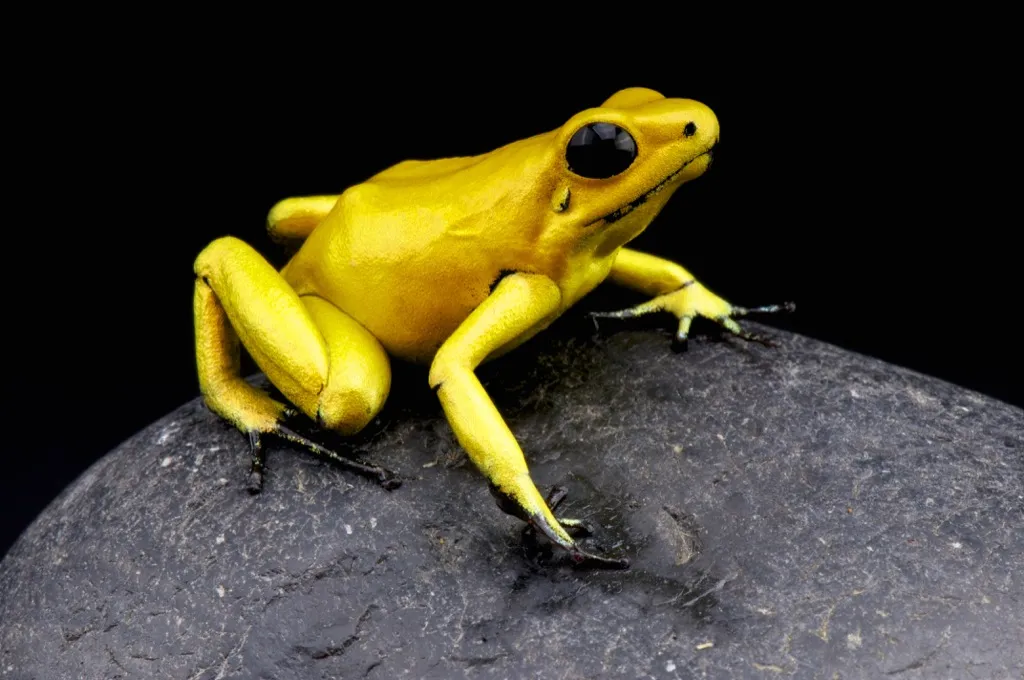
Holding the impressive title of "perhaps the most poisonous animal alive," the golden poison dart frog, at just a few centimeters long, may look unassuming but it packs enough poison to kill 10 grown men. Inhabiting the humid Colombian rainforest, it's especially deadly due to the fact that its poison is stored in glands just below its skin rather than, say, in its fangs—meaning that merely touching the things could mean the end of you.
12
Cape Buffalo
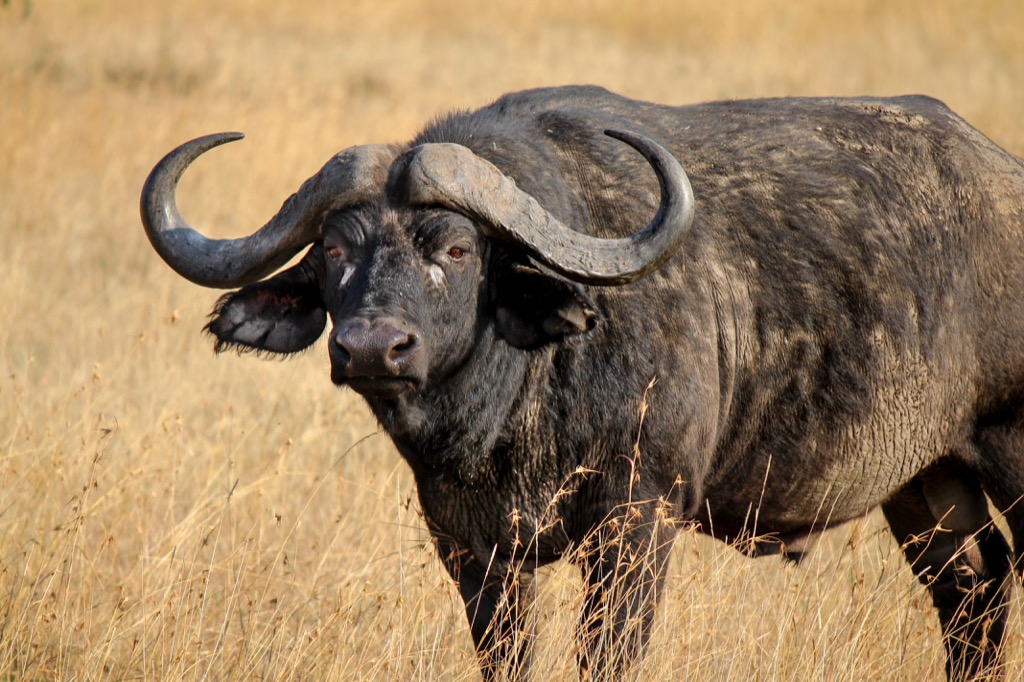
These huge mammals may look like exotic cows, but they are hardly placid animals to encounter. Reputed to gore and kill over 200 people a year, these animals are unpredictable and (unlike their Asian cousin, the water buffalo) considered all but impossible to domesticate. The destruction this species has brought to its prey, including humans, has earned it the nickname "the Black Death."
13
Boomslang
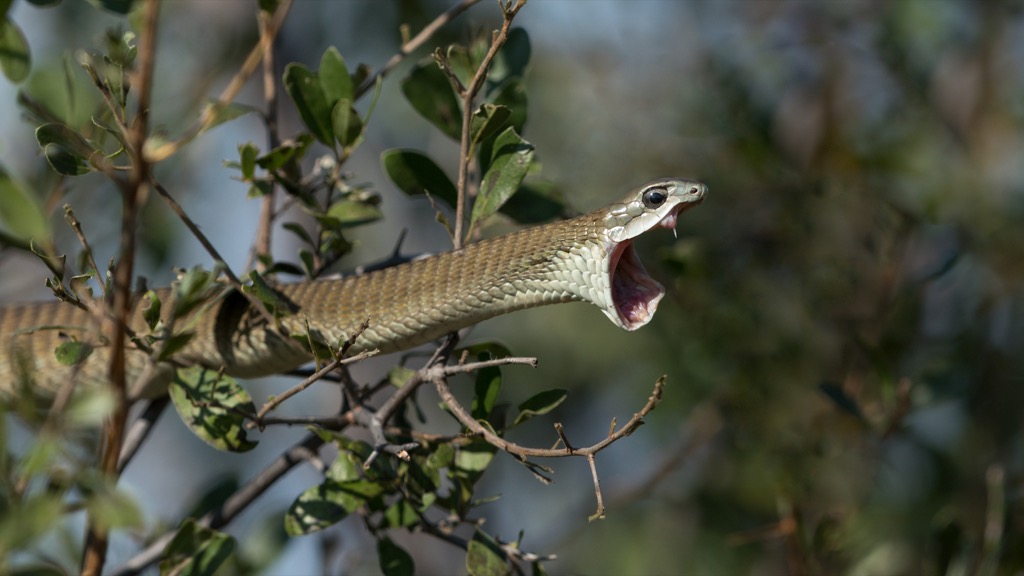
It might sound like a rap song, but this snake will definitely kill any kind of party vibe. Native to Sub-Saharan Africa, these big-eyed, bright-green creatures aren't aggressive unless provoked, but when they do bite, it's trouble. Opening their mouths up to 170 degrees, their venom is not only lethal but can cause their prey to bleed from every orifice. Fun!
14
Koalas

Seriously. These adorable marsupials spend most of their time hanging out in trees and sleeping, but if you catch them on a bad day, watch out. Take the case of Mary Anne Forester: The South Australian woman was out walking her dogs in 2014 when they encountered a koala at the bottom of a tree. It attacked her and the dog, grabbing on to Forester's left leg and refusing to let go. She had to get 12 stitches for it to heal.
15
Brazilian Wandering Spider

This arachnid's Greek name of phoneutria translates to "murderess," and with good reason: considered the world's most venomous spider, a bite from one of these creatures will cause extreme pain, loss of muscle control, and eventually paralysis and death. They don't build webs, but instead walk the jungle floor at night seeking out their prey, hiding in houses and cars by day, where humans are more likely to unexpectedly encounter them.
16
Swans
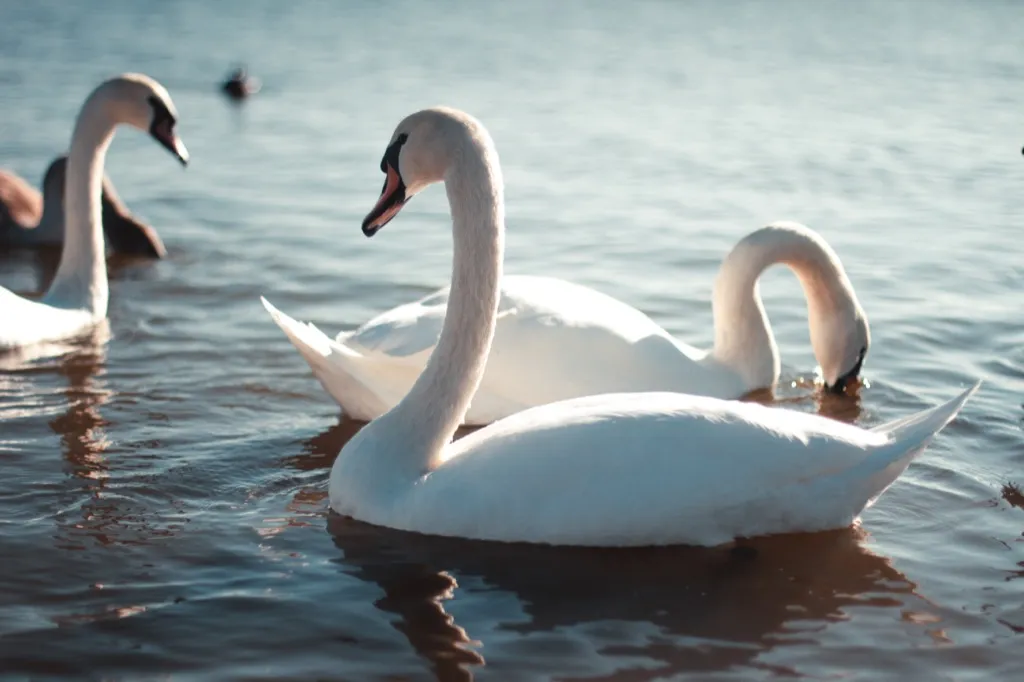
Though they have a reputation as majestic creatures of beauty, these waterfowl can do some serious damage when they get a mind to. On the River Cam in Cambridge, a swan named Mr. Asbo kept attacking rowers until it had to be removed. In 2012, a swan attacked an Illinois father of two, refusing to relent until he drowned.
17
Africanized Honey Bees

Unlike the other animals on this list, these creatures are not too dangerous when encountered individually, but there's danger in numbers. The result of a cross-breeding of African honeybees with European ones, these insects are slightly smaller than the latter species but are quicker to anger when their colony is disturbed and sting with more aggression, earning them the nickname of "killer bees."
18
Mountain Lions
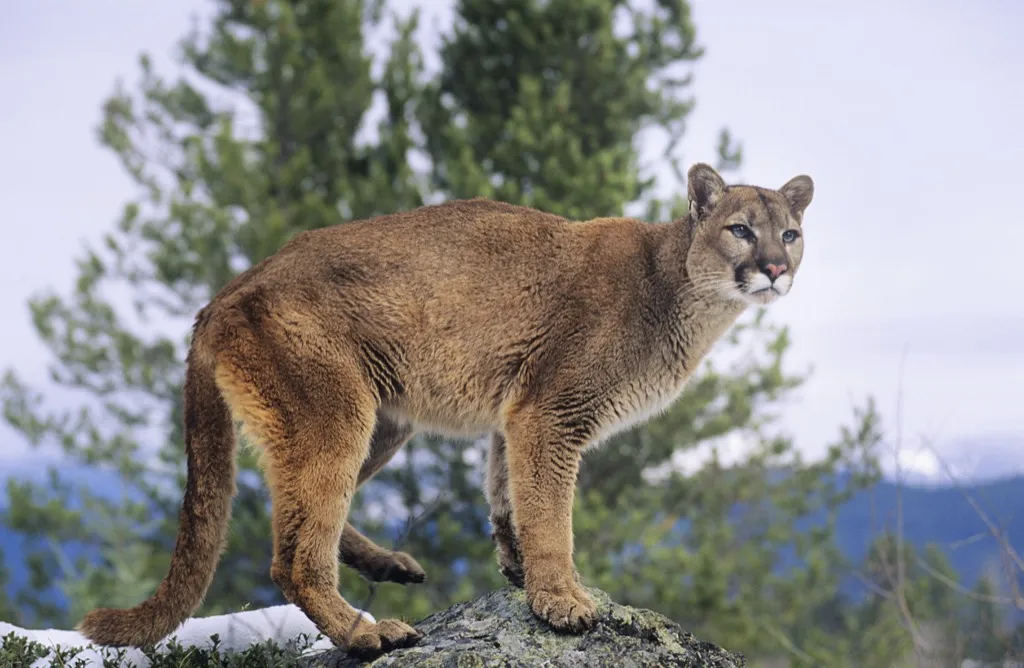
While these animals don't generally attack humans, encounters with them on mountain trails, particularly between dusk and dawn, are not uncommon. And at least 20 people have been reported killed by them over the last century or so. Unlike bears, however, experts say it's best not to run the other direction if encountered or to act timid. Instead, you should, according to the Mountain Lion Foundation, "Maintain eye contact. Stand tall. Look bigger by opening your coat or raising your arms. Slowly wave your arms and speak firmly. Throw items at the lion if necessary. Give the cat room and time to move on."
19
White-Tailed Prairie Dogs
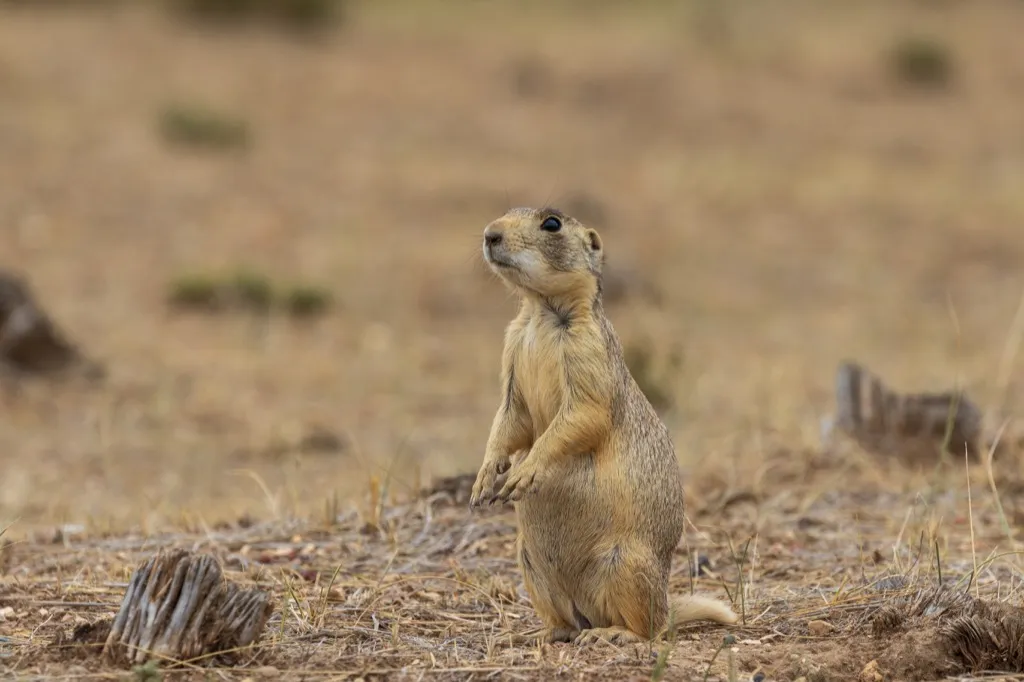
These seemingly harmless creatures have actually been discovered to be heartless serial killers. Researchers found that the animal that lives in colonies throughout the mountain states goes after the smaller Wyoming ground squirrel just for the heck of it—biting and shaking to death one after another. It's the "first time an herbivore has been recorded killing competitors with no real provocation and without turning them into a snack," as Smithsonian puts it. Though they don't seem to go after humans, they are certainly unpleasant customers if crossed.
20
Cobra
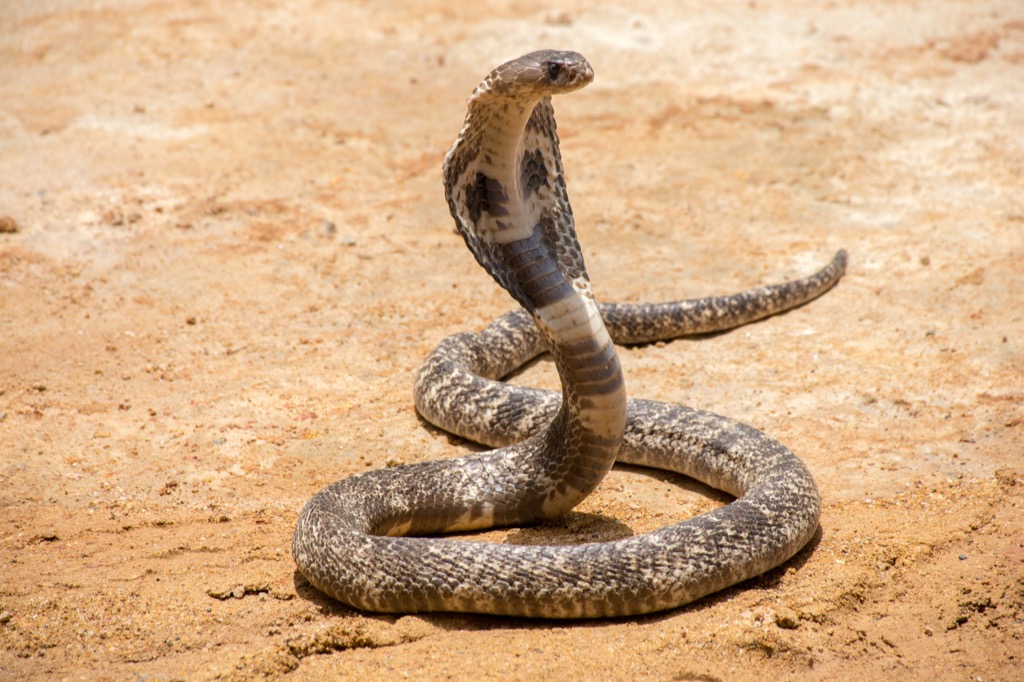
Found throughout Africa, the Middle East, India, Southeast Asia, and Indonesia, these reptiles' flashy hoods and upright postures when provoked make it pretty clear that you might want to stay away. According to the University of Michigan, a person bitten by a cobra and left untreated will stop breathing within half an hour. Some even spit venom at their prey, which then attacks body tissue and causes serious pain.
21
Beavers
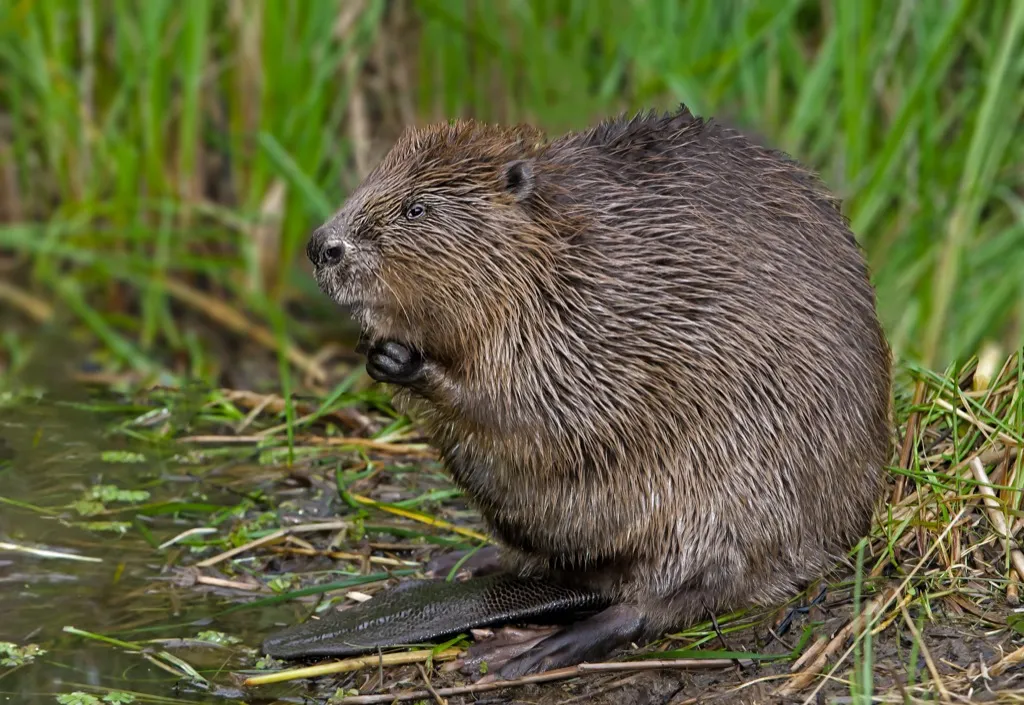
Those giant teeth never stop growing and the have to bite into something. Usually these river-dwelling creatures keep to themselves and their dams, but they're very territorial and can do some damage if crossed. A fisherman in Belarus discovered this the hard way when a beaver bit through his femoral artery, killing him.
22
Raccoons
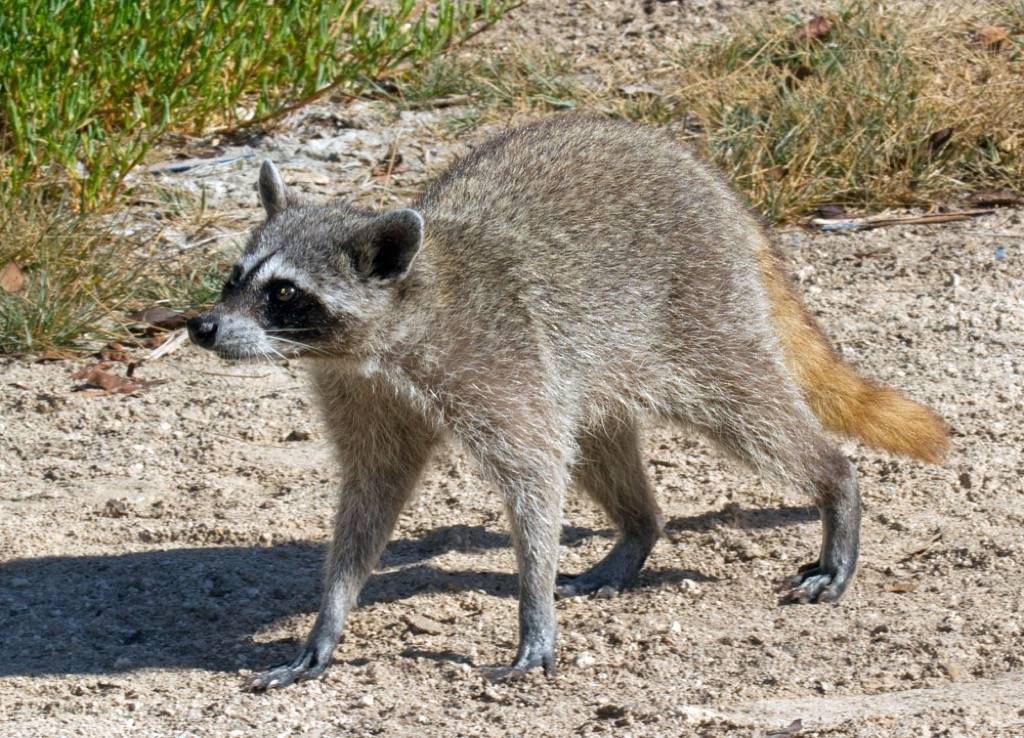
Rocket may be a fan favorite from the Guardians of the Galaxy mythos, but, off-screen, these guys are not exactly cuddly. The animals have been known to sink their claws and teeth into kids and slower adults. Rabid ones are far more terrifying and can attack multiple adults at once.
23
Grizzly Bears
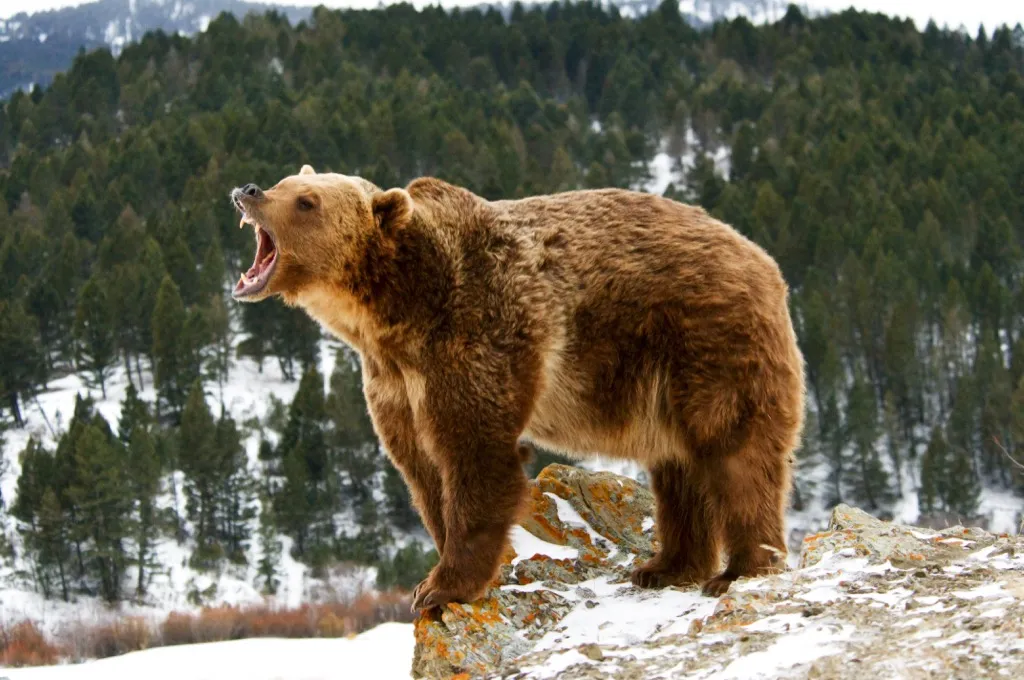
These tough animals weight hundreds of pounds (with at least one found to weigh 1,500 pounds), with four-inch claws and intimidating teeth. But their big size is matched by startling speed: they can run as fast as 30 miles per hour (especially if you happen to be standing between a mom and her cubs). Usually these beasts are happy to feast on berries, roots, nuts and leaves, but you definitely want to keep your distance should you encounter one.
24
Red Fox

It's rare that these clever creatures attack people—but it does happen. Two London girls were attacked by a red fox in their own bedroom and, as more foxes come into the city, as the result of urban sprawl, such human-fox encounters seem more likely. But for the most part, "Foxes are among the most amenable, least aggressive mammals you could share your environment with," urban wildlife expert John Bryant, told BBC. "It's very rare for a fox to be brave enough to face a cat."
25
Moose

They may look placid and easy going, but don't get between a mother moose and her babies or catch one in a bad mood. As this video makes clear, the mom does not hesitate to come after anyone seen as a threat. Of course, the bigger threat from these creatures comes from the fact that their top-heavy frame and tendency to wander into the road when it's dark make them prone to creating collisions.
26
Bald Eagles
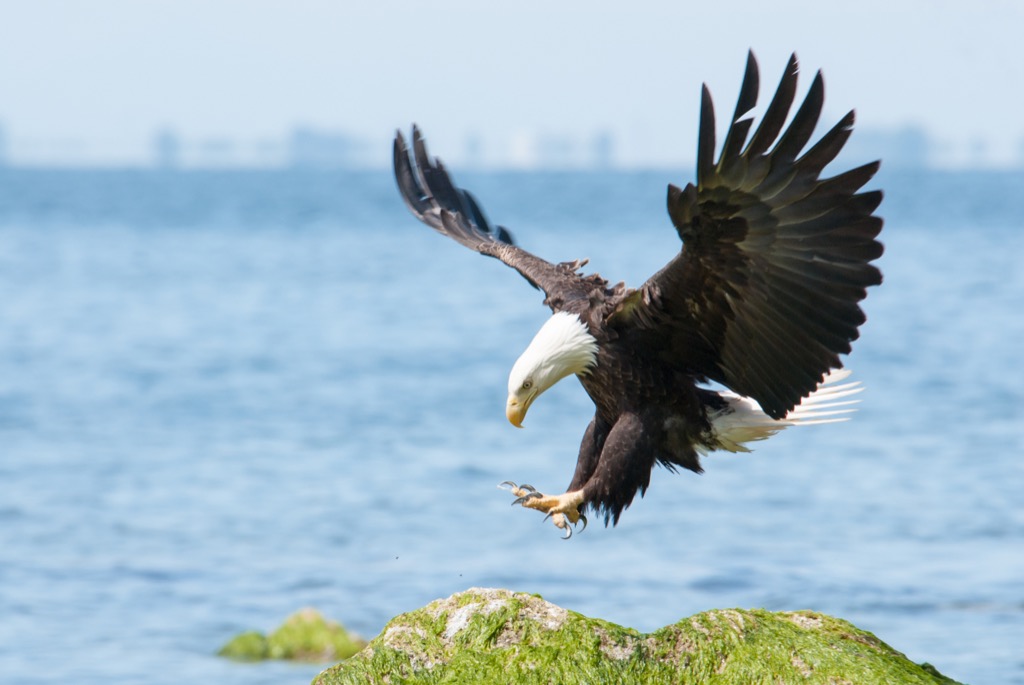
There may be federal protections preventing anyone from doing harm to these fierce birds, but don't let that let that make you forget how tough these creatures are. With wingspans ranging to longer than 7.5 feet and speeds of as fast as 99 mph when diving to attack prey, these are the heat-seeking missiles of the animal kingdom. While they don't attack people, they aren't a bird you'd want to cross.
27
Prairie Rattlesnake

You know this one when you hear it. This venomous pit viper found in the western United States and southwestern Canada can be identified by its diamond-shaped head and green-gray or green-brown scales with dark blotches. They strike fast and far—up to half their body length—and deposit between 20 to 50 percent of their stored venom in each attack, letting prey wander off and collapse before it follows the scent to dinner.
28
Belcher's Sea Snake
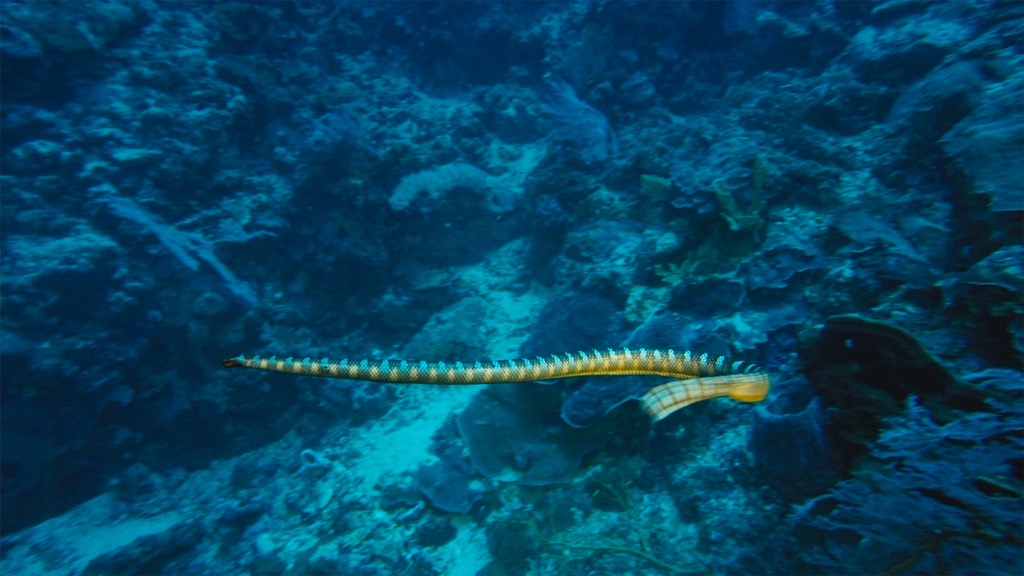
Also known as Hydrophis belcheri, this water-dwelling snake packs venom that can kill a person in 30 minutes. Fortunately, it's not a particularly aggressive species and will generally keep to itself in the waters of the Philippines, New Guinea, and Thailand and even when it bites, it just releases venom about one out of four times. Call it Belcher's roulette.
29
Cone Snail
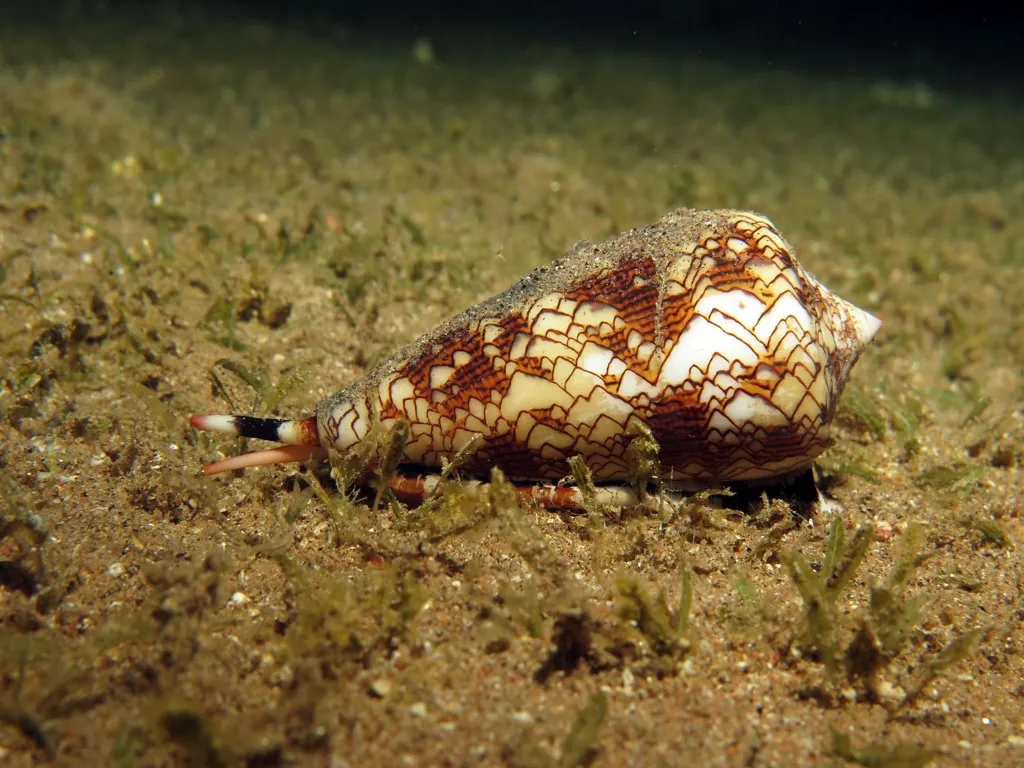
Who would have thought a snail could be tough. Turns out that this species packs a toxic venom that can paralyze a person immediately (its toxin has to move quick, since the snail itself can't, making it important for its prey to be incapacitated immediately). You're most likely to run into these brown-and-white shelled killers—who grow to lengths of about six inches—in the reefs of the Indo-Pacific.
30
Deer
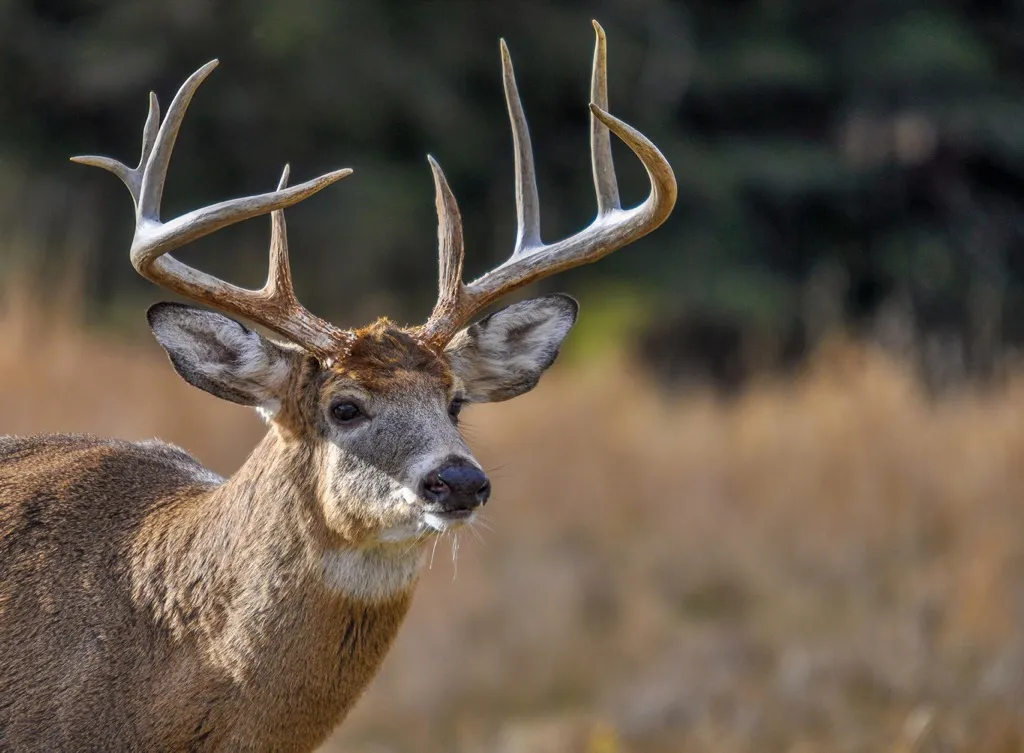
Bucks have been known to charge and trample humans when threatened or stressed. An Ohio man found this out last year when he did a good deed, rescuing a deer from a coyote trap, only to have the newly freed animal come after him, hitting him in the chest and knocking the man to the ground. In the city of Troy, New York, a deer came after a man in his own backyard until he had to be rescued.
